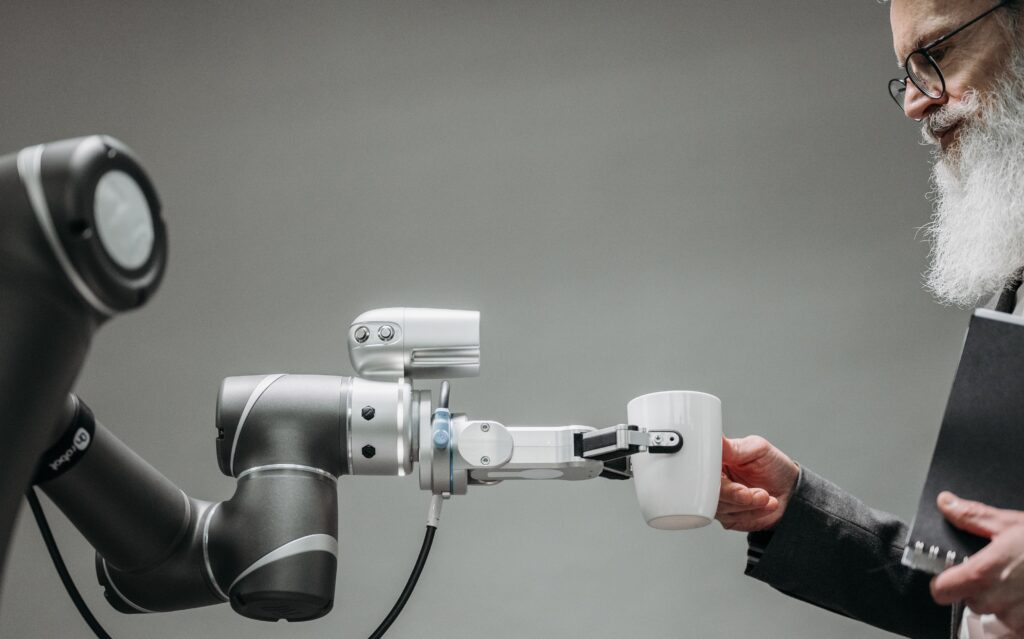What can AI do for me?

AI possesses a remarkable capability to automate tasks that previously required human attention, and it can even tackle challenges beyond human capabilities. Numerous fields are reaping the benefits of AI, including:
- Healthcare: AI is helping medical practices by enhancing diagnosis accuracy, aiding in treatment planning, and facilitating drug discovery.
- Finance: AI plays a crucial role in fraud detection, risk management, and investment analysis in the financial sector.
- Manufacturing: AI optimizes production processes and reduces defects by analyzing data and identifying patterns to enhance overall efficiency.
- Retail and E-commerce: AI is powering personalized recommendations for customers, offering chatbots for improved customer service.
- Transportation: AI is transforming the transportation industry by helping with navigation and being a key part of the development of autonomous vehicles.
As you can see, the range of applications is vast. So let us just pick a couple of examples that can be worth mentioning because they address extremely difficult tasks that once were uniquely human (vision and language) or they have a potential impact on human health (cancer research) or they make life “easier” and more personalized for individual needs (recommender systems)
Now, let’s delve into some of these real-world examples.
Label an x-ray as cancerous or not
Machine learning has made significant advancements in the field of medical diagnosis, especially in the detection of cancerous tumors from medical images like X-rays. Traditionally, identifying cancerous tissue in X-rays required the expertise of a radiologist. However, researchers are now developing machine learning models to automate this process, aiming to provide accurate and efficient diagnoses.
The process of determining whether an X-ray shows signs of cancer involves multiple steps. First, a collection of X-ray images is gathered and labeled with their respective diagnoses (classes: cancerous or non-cancerous). This dataset is then used to train a machine learning model to distinguish between these classes in an end-to-end fashion, without manually defining features, but letting the algorithm extract and use those that it finds more relevant for the objective of differential classification.
Amazon Recommender System
Amazon’s recommender system is a great example of how machine learning can be effectively employed. This system is designed to deliver personalized recommendations by learning from a customer’s behavior. To accomplish this, Amazon gathers data from diverse sources, including customer purchase history, product views, ratings, and reviews.
Once the data is gathered, different Machine learning models are trained, and once trained, these models are used to generate recommendations tailored to each customer, employing techniques such as item-to-item and user-to-item recommendations.
The system does not stop learning, but it will continuously collect and analyze input from customers through ratings, reviews, clicks, and purchases. This feedback serves as a valuable resource, enabling the models to improve, the more user behaviors are collected.
ChatGPT
ChatGPT is an impressive AI system created by OpenAI that uses machine learning to engage in “intelligent” conversations with users. It’s designed to “understand” and respond to chat messages in a natural and helpful manner. The technology behind ChatGPT is built upon the GPT-3.5 model, one of the most advanced language models currently available and itself based on the Transformer neural net architecture which has revolutionized the field since its inception.
This AI system employs a sophisticated deep-learning algorithm to analyze the text input and generate relevant and meaningful responses. It has been extensively trained on an enormous amount of text data, enabling it to grasp the intricacies and context of human language.
In summary, AI currently has a large number of different uses, ranging from healthcare to transportation. Furthermore, as AI technology develops the different uses keep popping up more and more. Check back in a year and this article might look completely different.
